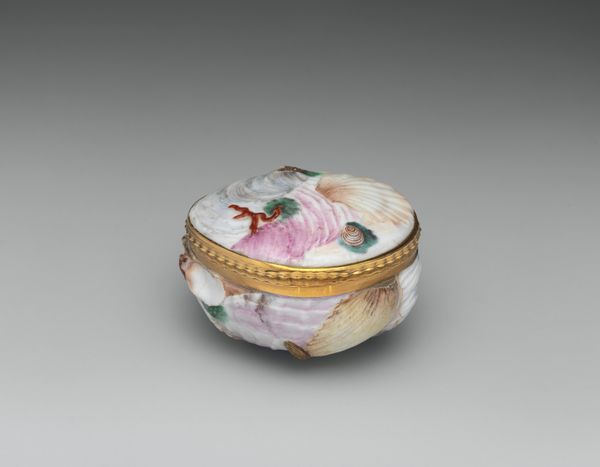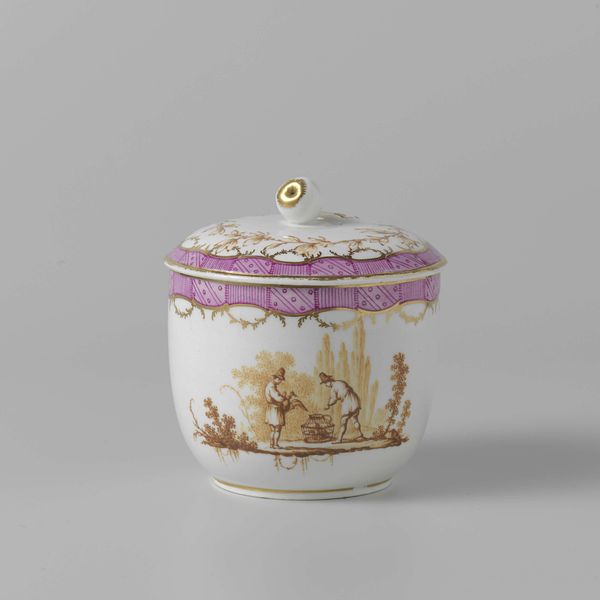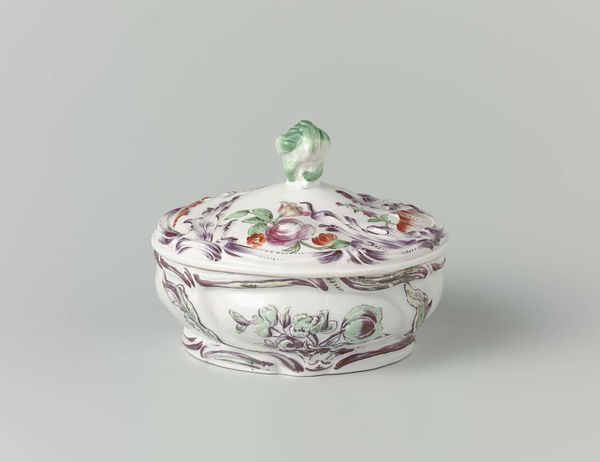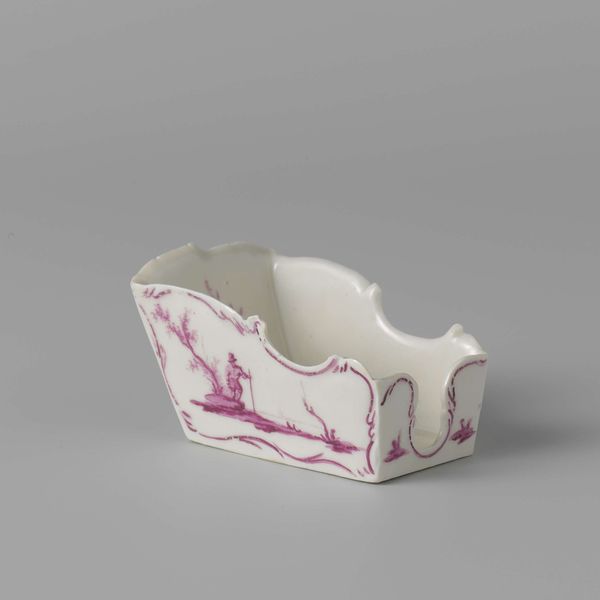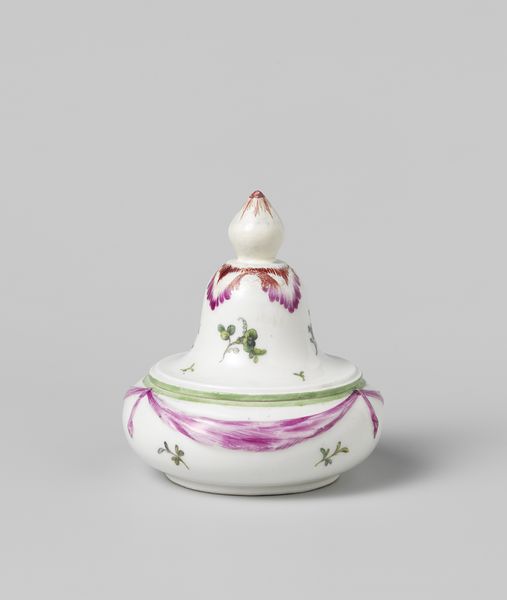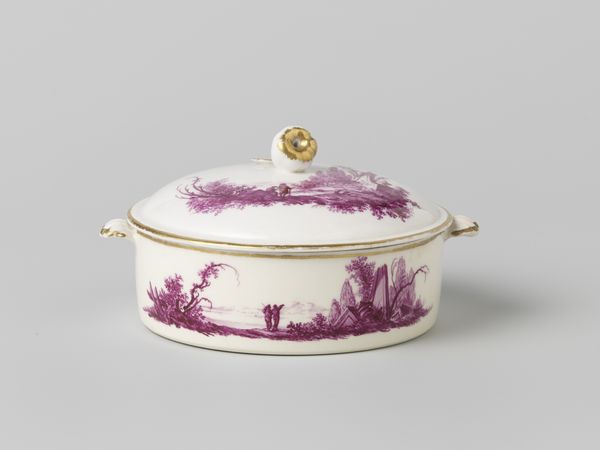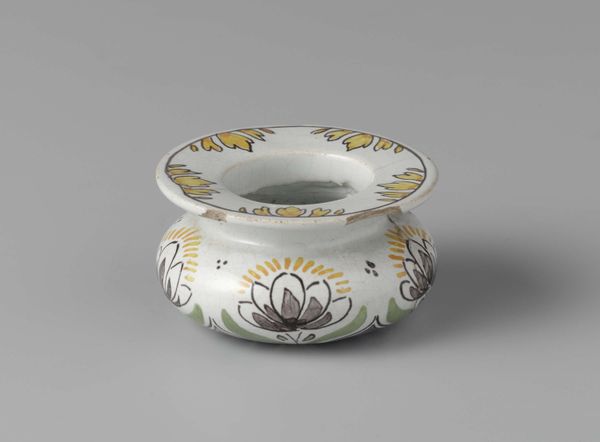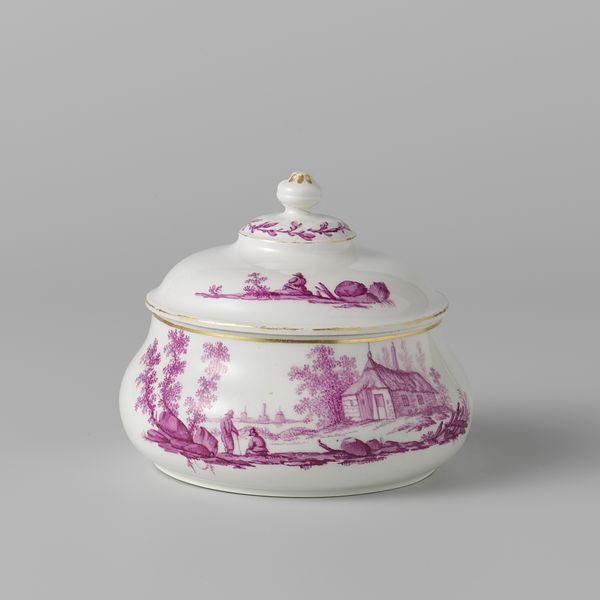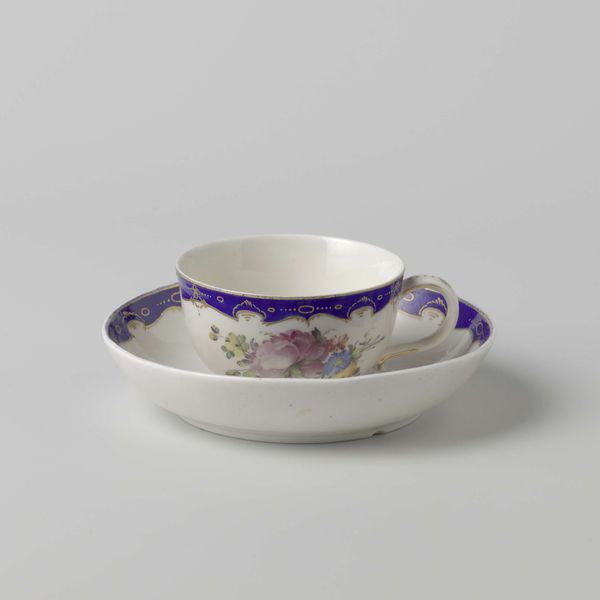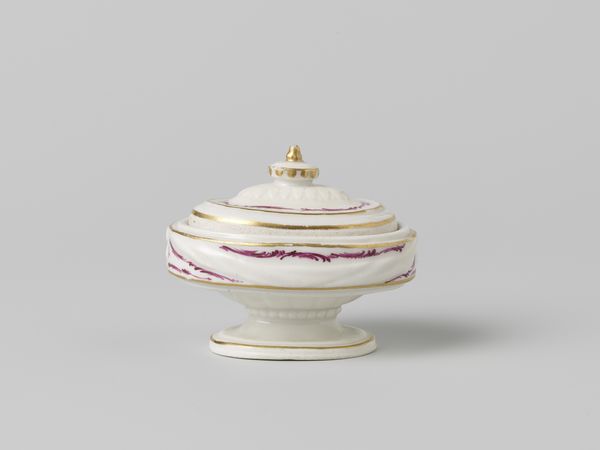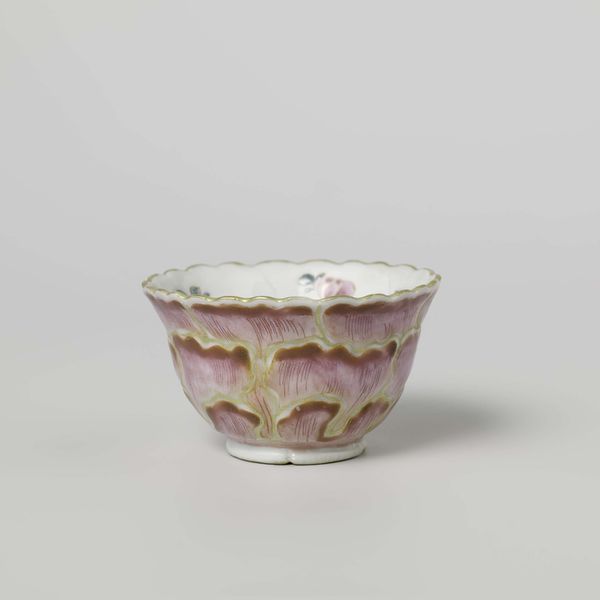
Dimensions: height 4.1 cm, width 9.7 cm, depth 9.2 cm, width 9.7 cm, depth 9.2 cm
Copyright: Rijks Museum: Open Domain
Editor: So, here we have a pair of porcelain salt cellars made by Loosdrecht, circa 1774-1778. They’re currently held in the Rijksmuseum. The delicate purple landscape scene seems quite quaint and decorative. What’s your take on these pieces? Curator: Well, first, consider the cultural role of salt during this period. Before refrigeration, salt was vital for preserving food. Having elaborate salt cellars wasn’t just about utility; it signaled wealth and social standing. How does this knowledge shift your perspective on their decorative quality? Editor: I see, they weren’t just pretty things, but functional objects that also performed a social function. So, the artistry enhances their perceived value, reflecting the owner's status? Curator: Precisely! And let’s consider the Rococo style – the curving lines, delicate forms. These are designed to please the eye, to evoke a sense of luxury and refinement. This piece highlights a key shift of how the wealthy presented themselves. Editor: So it's a carefully constructed image they're projecting? Not necessarily honest but performative. Curator: Exactly. These cellars participated in that performance. The choice of porcelain too is telling. Porcelain production was a carefully guarded secret for a long time. Its adoption signaled a specific aspiration. Now does this deeper dive affect how you view them? Editor: It makes me realize I initially underestimated the craftsmanship. These pieces really say so much about the culture of consumption at the time, and also speak about access and social structures of the time. Thank you! Curator: Indeed. Looking closer, beyond aesthetic appreciation, reveals their fascinating place within a broader history. A truly eye-opening consideration, wouldn't you agree?
